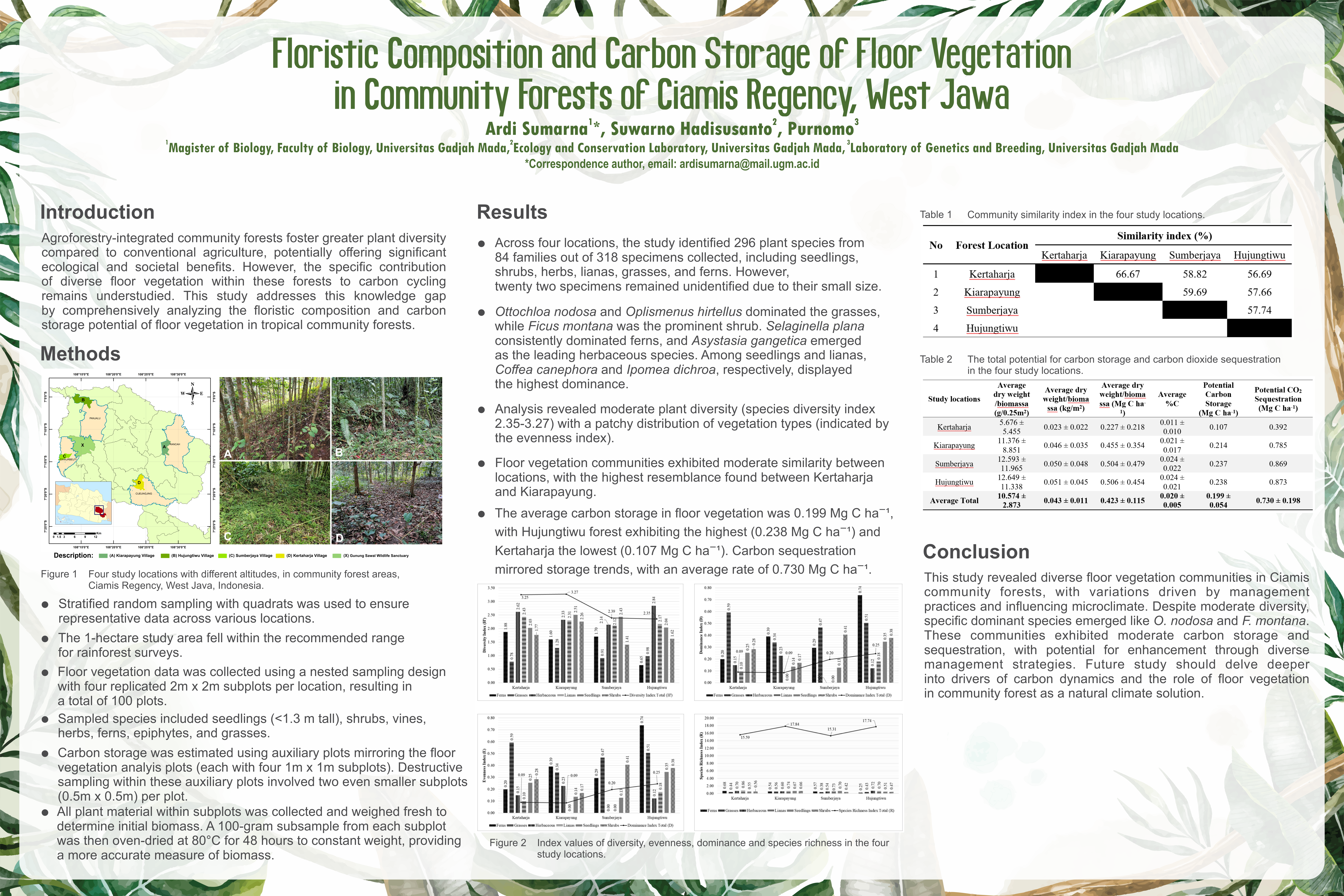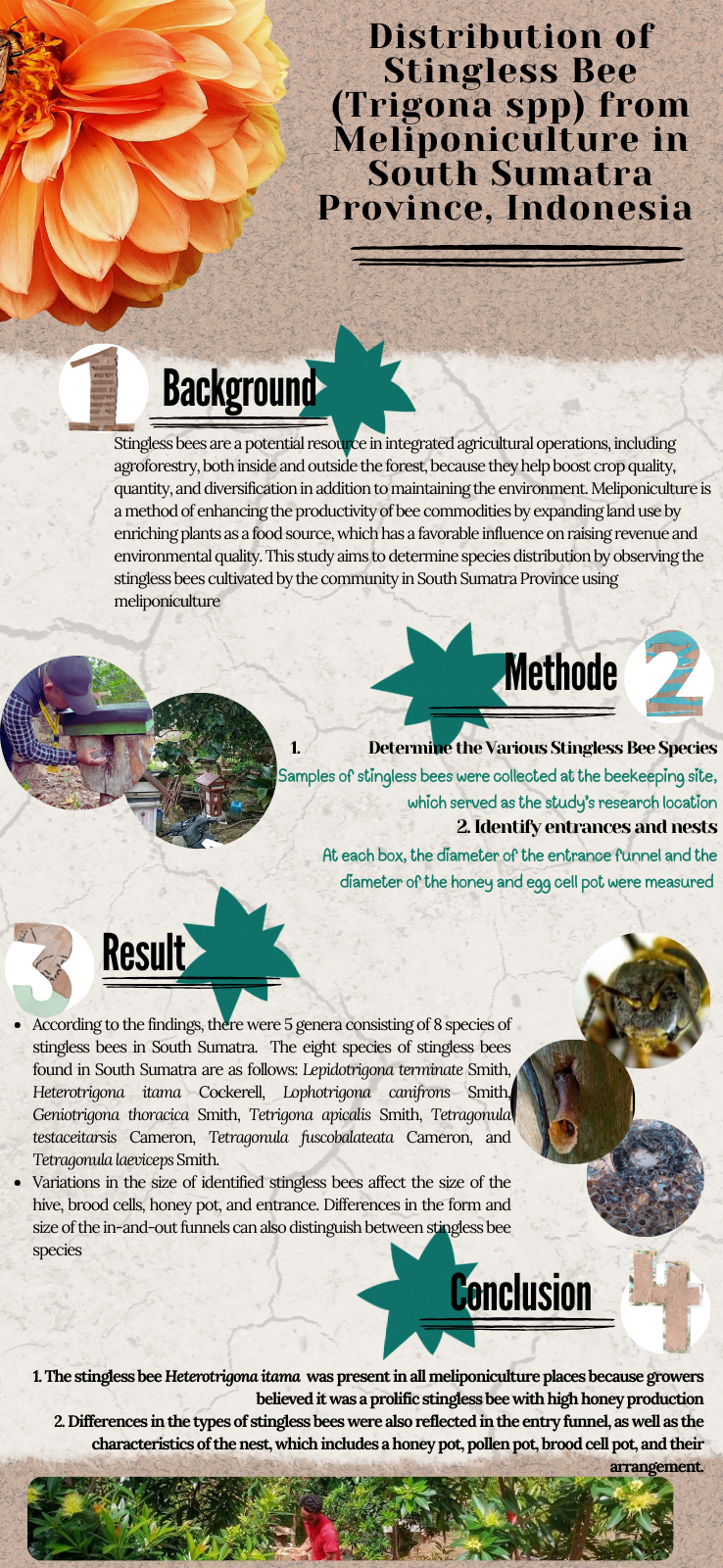Abstract
Mount Merapi with its Merapi-type pyroclastic flows provides burnt and unburnt areas which are excellent to study establishment events of pioneer plant species. Using site comparison approach, floristic composition was studied, and thus an area that was burnt by pyroclastic flows in 2010 (Kalikuning) and another area that is relatively intact or unburnt (Kaliurang) was chosen as study sites. We found 7,817 individuals belonging to 72 species and 36 families in the burnt site, and 4,093 individuals belonging to 79 species and 39 families in the unburnt site. The most important family as determined by the Family Importance Value (FIV) was Rubiaceae in Kalikuning and Asteraceae in Kaliurang. In terms of Importance Value Index (IVI), Borreria occimoides (Rubiaceae) and Eupatorium riparium (Asteraceae) were the most important species in Kalikuning and Kaliurang, respectively. Multivariate approach using Non-metric Multidimensional Scaling ordination technique showed that floristic composition in the newly burnt site were different with those that occupying the intact site (RANOSIM = 0.72). Borreria occimoides, Eupatorium riparium, Athyrium dilatatum, Paspalum conjugatum, Brachiaria reptans, and Selaginella doederleinii were the species mainly responsible in explaining the differences between sites.
DOI: 10.7226/jtfm.19.2.85





